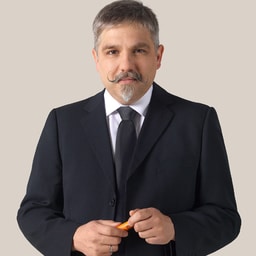Master Confusion – the silent strategist in the background
Expand the table of contents
Ignoring the needs of those involved
Making decisions impossible
Prevent focus in a targeted manner
Keep up appearances to drive waste forward
Preventing good leadership
Initiate as many changes as possible at the same time
Conclusion: The achievements of Master Confusion
You won’t find him in modern management textbooks. His name rarely comes up at conferences. And yet he is omnipresent in everyday working life. Everywhere. In almost all organisations. Master Confusion, the silent strategist in the background, who for centuries has secretly ensured that we never run out of work with his teachings.
Unfortunately, little is known about this philosopher and thinker. During his lifetime, he set himself the goal of maximising confusion and thus contributing to the proliferation of non-value-adding work. His teachings were passed on mainly by his students in the form of doctrines.
Instead of clarity and transparency, he relies on vague information, overloaded processes, tried-and-tested tactics of confusion, patchy communication and the undermining of any commitment on the part of those involved. All with the aim of increasing the amount of non-value-adding work and adding to the confusion within organisations. This silent hero of confusion has shaped our working world more than any other thought leader before him. The impact of his teachings is legendary, and one might even think he is experiencing a quiet resurrection. Everywhere we hear talk of inefficient and inflexible processes, excessive rules and regulations, and overloads of time, resources and capacity. His triumphant march through corporate headquarters seems unbroken.
Just recently, an unknown archive containing the teachings of the great master of confusion was rediscovered. It will take some time to evaluate the archive in its entirety. Therefore, only a few excerpts from Master Confusion can be quoted here.
Keep them ignorant – anything else leads to improvements
His recommendation to all managers to keep their employees ignorant is legendary, as otherwise they might get the idea of simplifying and improving things. Instead, he recommends:
Master Confusion says, if you want to prevent your organisation from working effectively and efficiently, make sure that your employees are kept ignorant. Never trust in their abilities, skills and expertise.
Ignoring the needs of those involved
Many people will be familiar with the following recommendation from the grand master of confusion:
Master Confusion says, first choose the tool and then define the process. Not the other way around. This ensures that everyone is busy getting to grips with the tool instead of improving the quality of the results.
Digitalisation in particular has fuelled this theory. Instead of first focusing on the processes of collaboration and then deciding on digital tools on that basis, the discussion about digital tools often begins, only to discover at some point that the processes in place do not fit the tools at all and that they must be aligned with the specifications of the digital tools. This is the perfect recipe for creating unnecessary work. Just what we need in our modern working world.
Making decisions impossible
For anyone who wants to ensure that no decisions are made in meetings and committees, the following maxim is highly recommended:
Master Confusion says, if you want to ensure that nothing comes of it and nothing happens, expand the circle of participants as much as possible (to more than 10). The more, the better.
Maximising the number of participants guarantees an increase in the inefficiency of any committee, and we can assume that hardly any decisions will be made. This is ideal for increasing the amount of non-value-adding work and increasing confusion and lack of transparency in the organisation.
Incidentally, when it comes to decisions, Master Confusion repeatedly recommends the following in a similar form:
Master Confusion says, if you want to ensure that the quality of decisions is poor, make sure that no one is on site and that decisions are made based solely on the files.
The master was obviously aware of how important it is not to make decisions without consulting those who do the actual work and know the details of the work. It is therefore important to avoid letting this knowledge influence decisions, as otherwise there is a risk that real improvements will be made.
Prevent focus in a targeted manner
Limiting parallel work? Concentration? Very dangerous devilry. Anyone who wants to deliberately undermine effectiveness and efficiency should urgently take a lesson from the pioneer to heart:
Master Confusion says, ignore the flow of work. Interrupt it as often as you can. Make sure that nothing can be finished. This maximises everyone’s dissatisfaction.
Also highly recommended:
Master Confusion says that if you want to overload the workflow as much as possible, make sure that the bottleneck is not the pacemaker.
He also recognised early on that this allows you to make adjustments in several areas without significantly reducing waste in the organisation:
Master Confusion says that the more meaningless activities you perform that do not contribute to the result, the lower the effectiveness. Therefore, never question whether something contributes to the result, as this could reduce waste.
Keep up appearances to drive waste forward
To keep up appearances, he recommends the following effective advice, especially for managers:
According to Master Confusion, constant stress promotes the maximisation of waste through wear and tear and reduces the risk of creative problem solving. Efficiency neurosis is therefore an effective means of increasing waste. Promote it consistently.
Those who react to constant stress in the rat race have no energy or time to proactively solve problems before they arise. Thus, 100% plan fulfilment is a sure-fire guarantee that all attempts at improvement will be nipped in the bud. This is especially true when you focus exclusively on financial figures and ignore everything else.
Preventing good leadership
Since so-called servant leaders occasionally creep into management ranks and might also come up with the idea of promoting employees with problem-solving skills, Master Confusion has devised the following trick to ward off such efforts:
Master Confusion says that good leadership counteracts waste. A small span of control promotes good leadership. Therefore, the span of control should be significantly greater than seven employees so that good leadership cannot develop.
Initiate as many changes as possible at the same time
Master Confusion fundamentally rejects any positive form of change in an organisation, especially when it comes to improving processes and results. His recommendation is therefore:
Master Confusion says that if you want to avoid any improvement, never define the state you want to achieve. That way, you can be sure that you won’t be able to make any comparisons that reveal gaps that can be closed.
This is indeed an excellent way to prevent opportunities for improvement from being recognised and ultimately implemented. Such an outrage should be avoided, as it could lead directly to a reduction in waste in the organisation.
Since situations can always arise in which changes are demanded from outside and it is not always possible to avoid these demands, there is another tactical recommendation for saving face on the one hand and letting the attempt come to nothing on the other:
Master Confusion says that if you want to prevent effective change in your organisation at all costs, you must initiate as many changes as possible at the same time. The more initiatives, the better. Preferably competing ones. This way, you will successfully contribute to waste.
This is a very good way to undermine any change initiative as quickly as possible and significantly increase efficiency by maximising waste and confusion.
Conclusion: The achievements of Master Confusion
Did you recognise any of these principles? It’s amazing how influential the teachings of this forgotten master of confusion still are. It has long been suspected that his students have risen to the highest management positions. In any case, his legacy is present in almost all organisations at all levels. The management theorist’s contributions to strengthening waste and confusion in the world of work are undisputed and deserve to be recognised on a regular basis.
Notes:
Thomas Michl regularly publishes the latest insights from Master Confusion on his German-language Gedankenblog. Definitely worth a visit!
If you like this post or want to discuss it, feel free to share it in your network. And if you have any comments, please do not hesitate to send us a message.
Thomas Michl has published further posts on the t2informatik Blog, including

Thomas Michl
Thomas Michl holds a degree in public administration and an MBA. He worked in the public sector for ten years before joining borisgloger consulting GmbH in 2018 and then Exxeta AG. Today, the passionate agilist works for FourEnergy GmbH as a Senior Business Consultant.
Thomas Michl is one of the founding members of the Agile Administration Forum and a board member of the supporting organisation. The Agile Administration Forum is run on a voluntary basis and has set itself the goal of bringing the idea of the Agile Manifesto to public administration by providing a platform for dialogue and peer-to-peer advice.
In the t2informatik Blog, we publish articles for people in organisations. For these people, we develop and modernise software. Pragmatic. ✔️ Personal. ✔️ Professional. ✔️ Click here to find out more.


